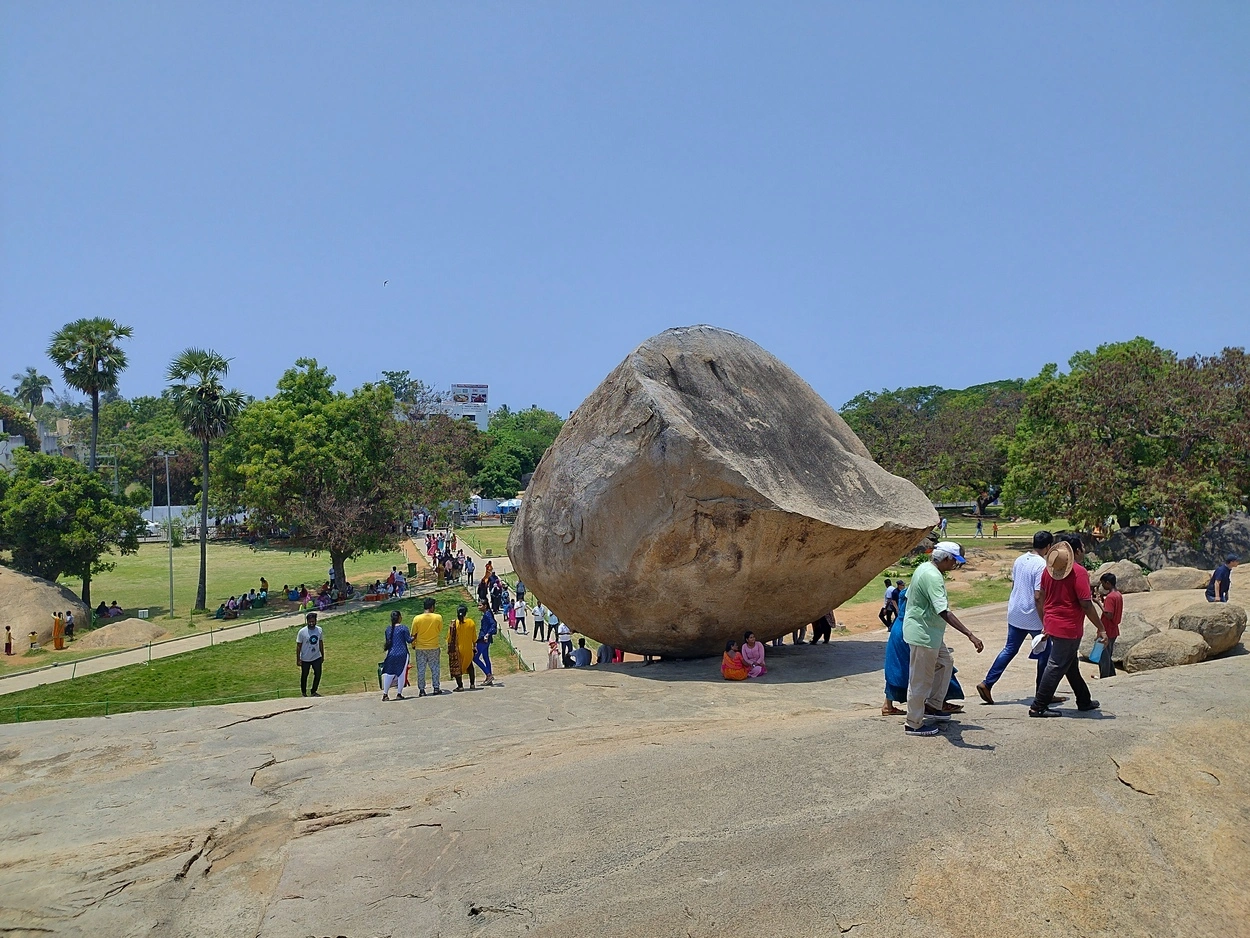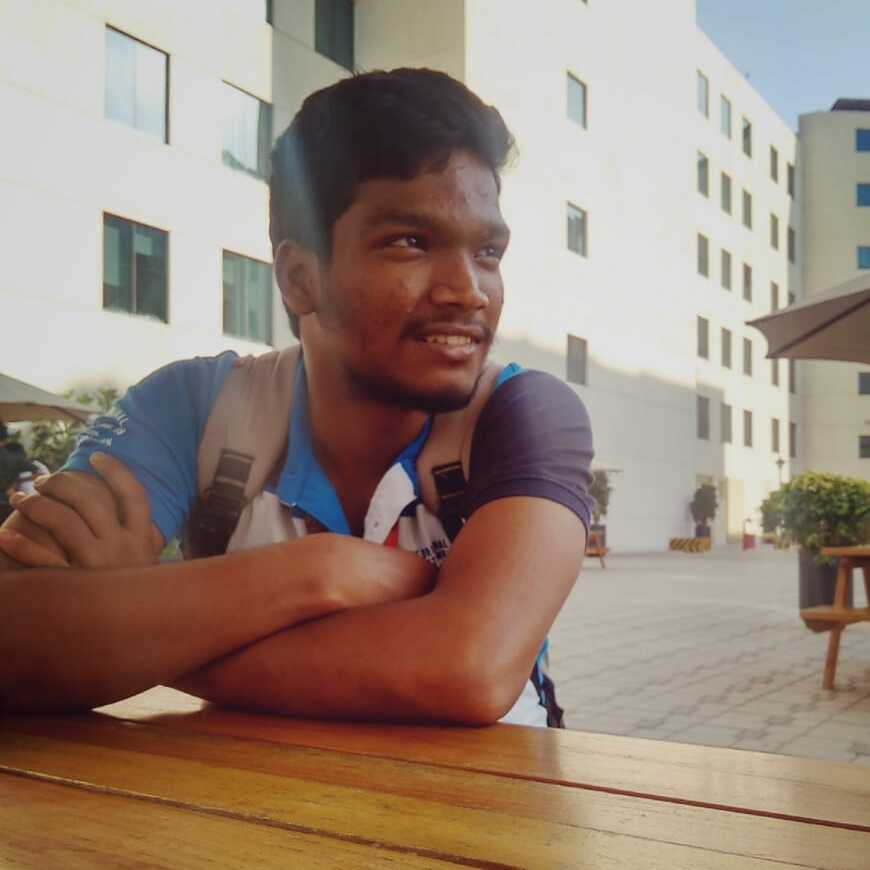‘Vaan Irai Kal’, known as Krishna’s butter ball, is a 250-tonne massive boulder lying on a small rocky hill in Mahabalipuram. This boulder is almost round except for the back side which is flat and is in minimal contact with the surface along its curvature. This gives the viewers a deception of the rock barely balancing on the slope downhill even though it is firmly in place.
There was an attempt to move the rock from its place with the help of 7 elephants during the British colonial era by Arthur Havelock, the then-governor of Madras. The effort resulted in failure and stands as proof of how strongly placed the boulder is. People are allowed to touch or push the stone and take pictures next to it.
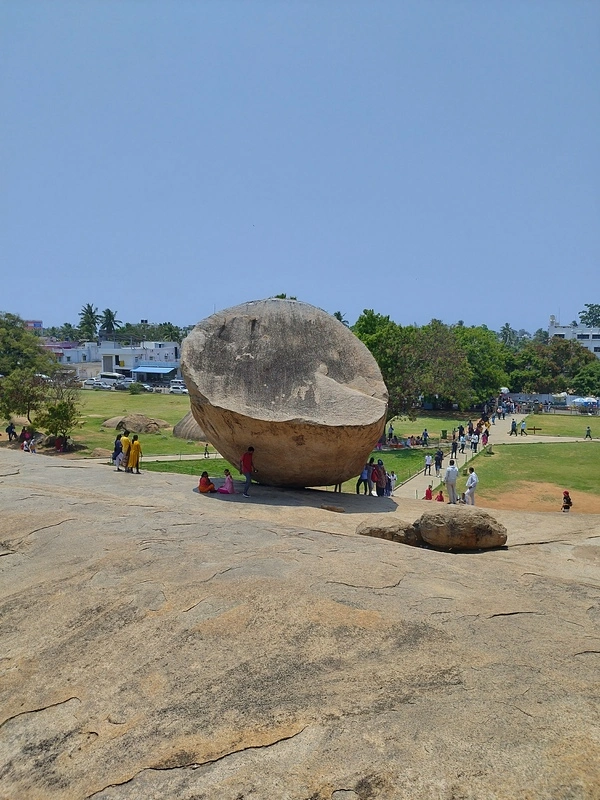
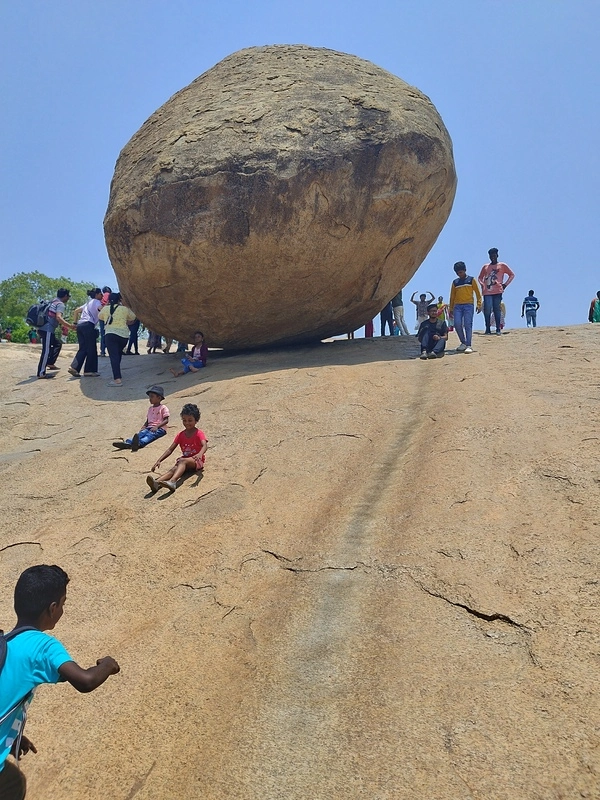
The slope under the giant boulder is so skiddy that children often play sliding down on it. Even adults occasionally join the fun with their kids. A slide trail has naturally formed due to this consistent usage by people. Climbing up this slope is challenging and mildly risky.
There are other safe paths to climb and reach the Butterball. The small hill meets the ground with less steepness on the right side. Use this path if you are concerned about safety.
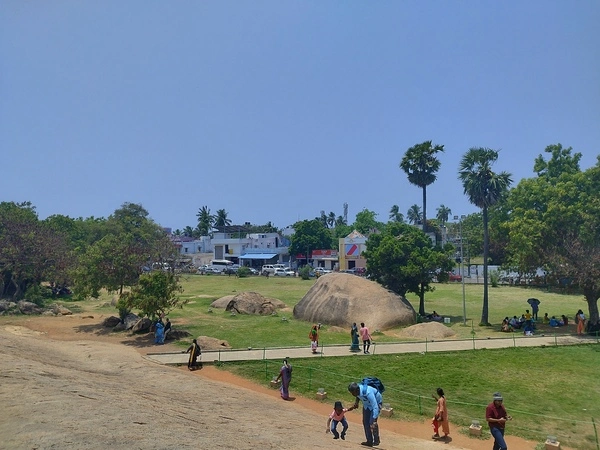
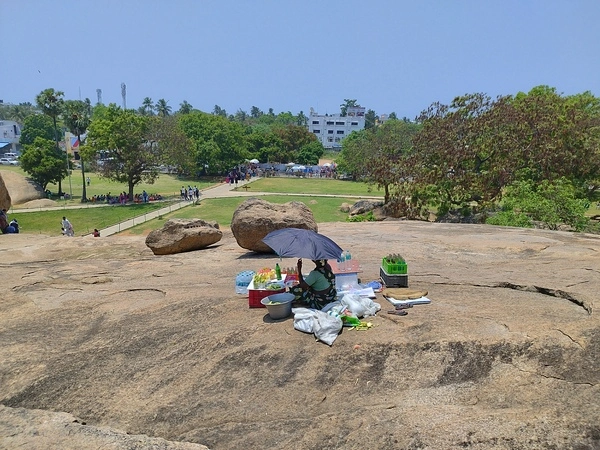
Other structures.
There are other fascinating sites inside the premise of Butterball. To its right, there is a huge rock formation where two massive rocks stand upright and support each other while leaving space in between them. This space is a great photo spot.
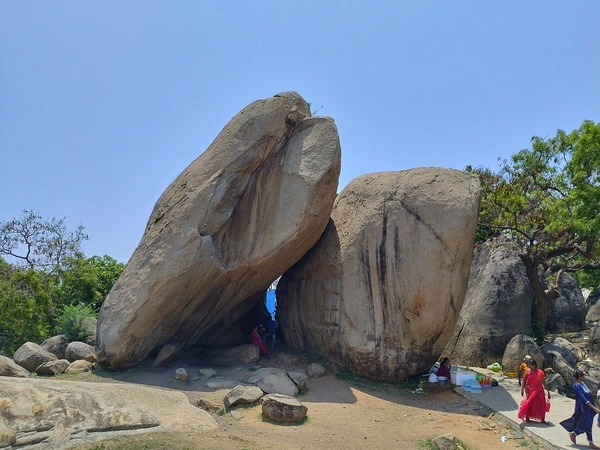

Trimurti cave.
On the further right, there is a monolithic triple-celled shrine called the Trimurti cave. Each cell is dedicated to the three Hindu Gods Brahma, Shiva, and Vishnu (Three Murtis). This structure has a lot of statues carved on it, depicting different Gods and other characters. The middle chamber has a black Shivalinga inside it. Visit the nearby Pancha Rathas to witness more monoliths.
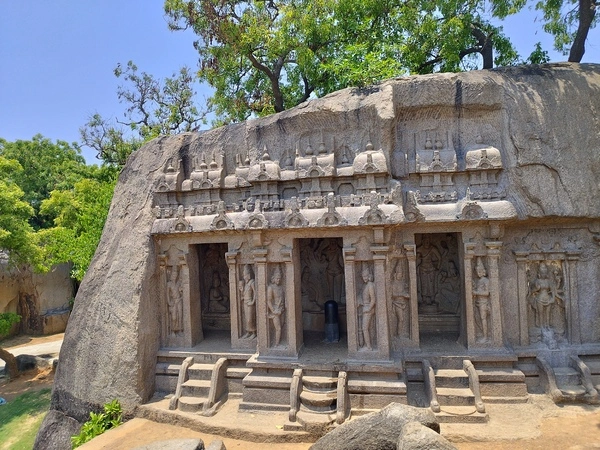
There is a large pit built in front which is called the Gopi’s churn. These structures were built during the reign of the Pallava king Paramesvaravarman I in the 7th century.
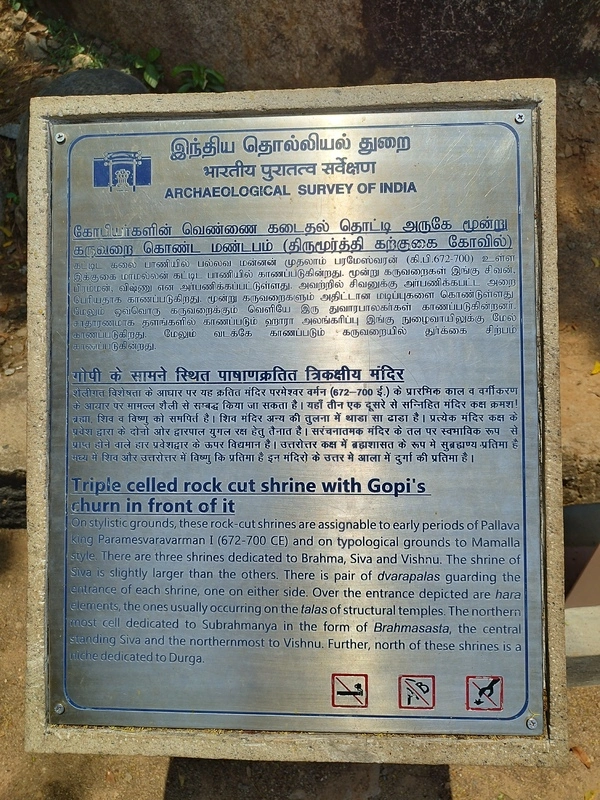
Behind this sculpture, there is a rock carving that holds sculptures of elephants, a monkey, and a peacock. This is done in a granite rock.
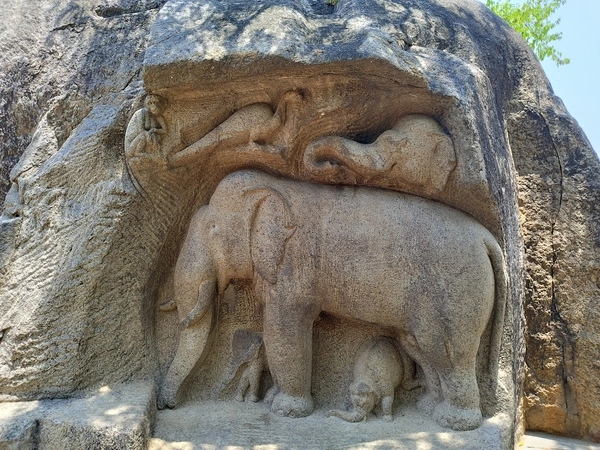
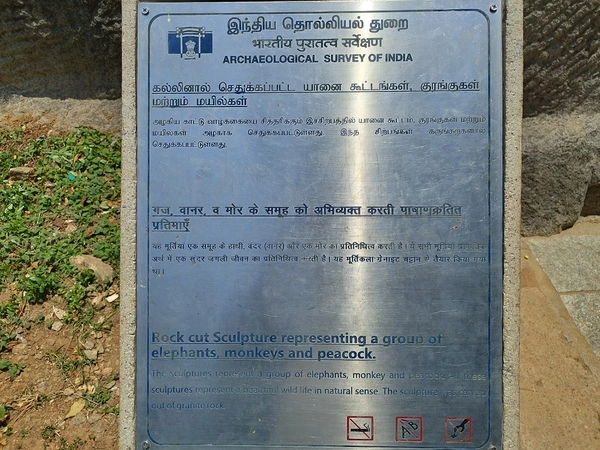
Dharmaraja’s Rock-cut Throne
In addition to the well-known monolithic and cave temple, there are a number of other similar works of architecture in Mahabalipuram, not falling under any definite category. One among them is Dharmaraja’s rock-cut throne. This monolith consists of a large rectangular seat with a beautifully carved couchant lion at one end.
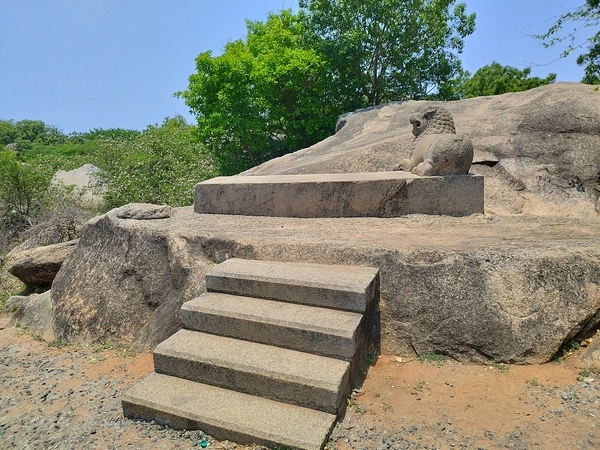
Draupadi’s Bath
It is a rock cut into a rectangular cist-like structure that resembles a bathtub. Thus, it received the name Draupadi’s Bath.
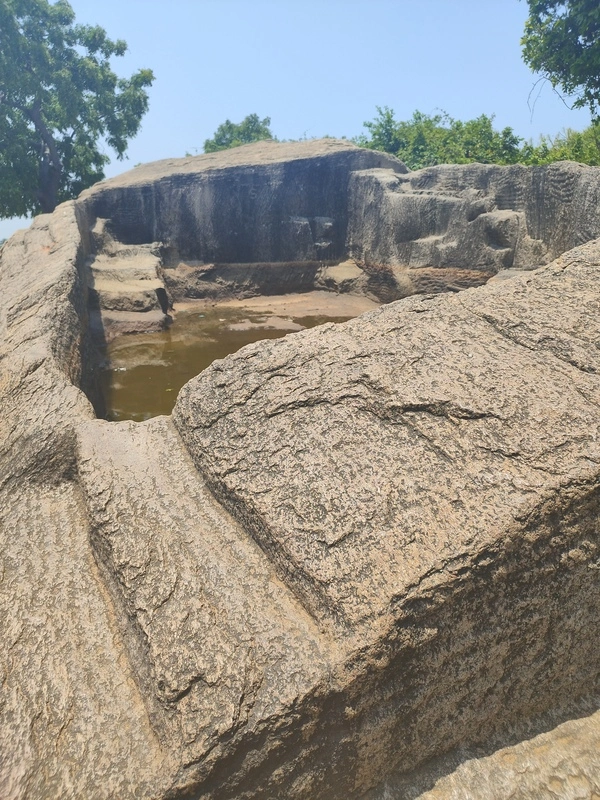
Royagopuram.
This is located south of the Butter Ball. No need to buy a separate ticket to visit the Royagopuram.
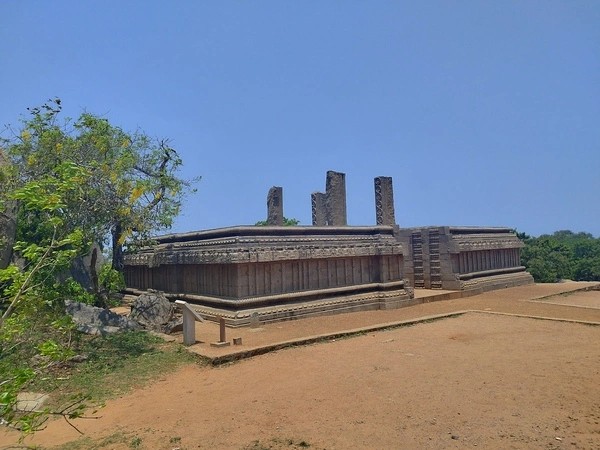
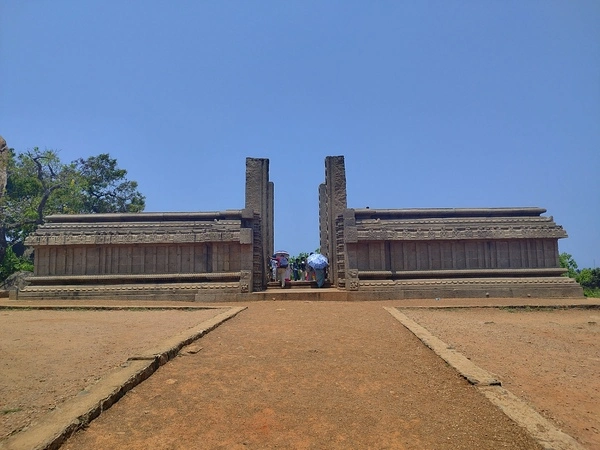
Believed to be built during the Vijayanagara period, this monument is a huge incomplete structure erected on top of a hillock. It is a square-shaped landmark with a lot of carved artwork on its walls. Two door jambs stand tall at both sides of the Royagopuram. These jambs have deities statues carved on them.
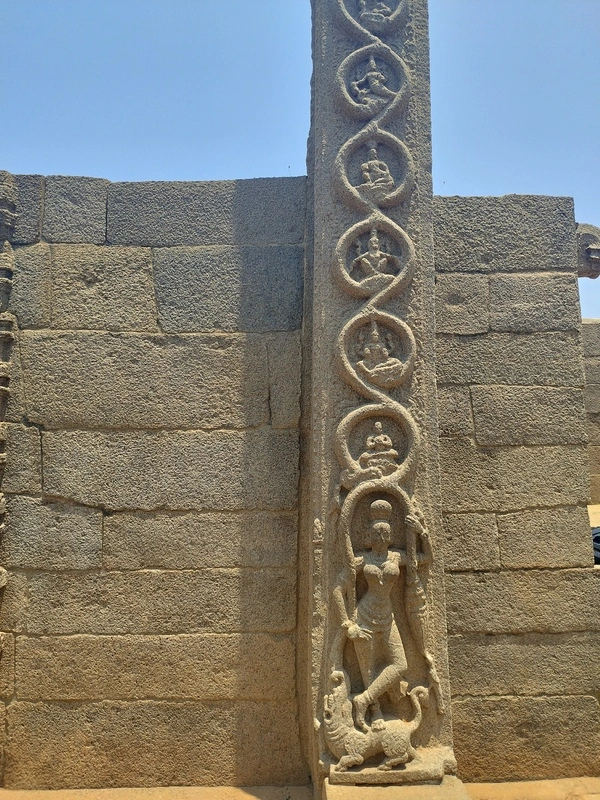
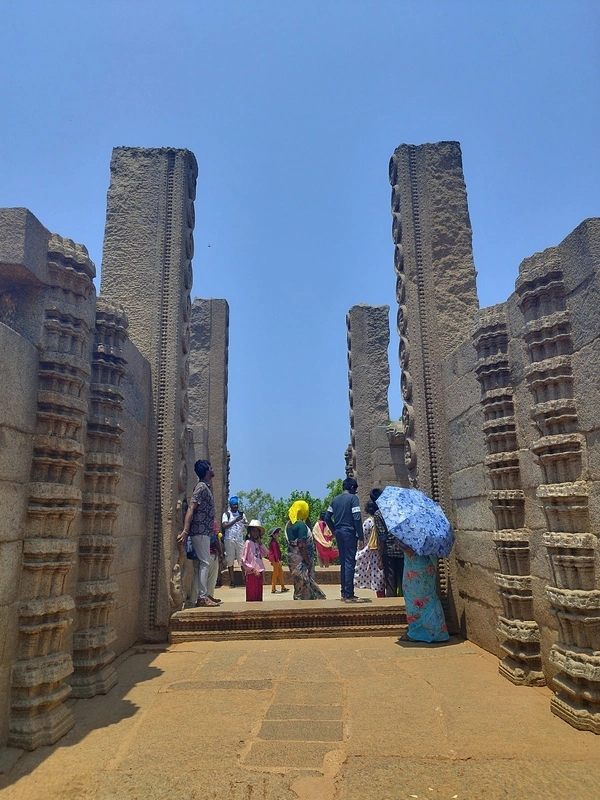
Visitors fancy this spot as a lovable photo spot, as all the dimensions of the structure are square and straight. The door jambs look like photo frames if seen from the outside. Also, the view from the east side of the Royagopuram is a beautiful blend of nature and human commute.
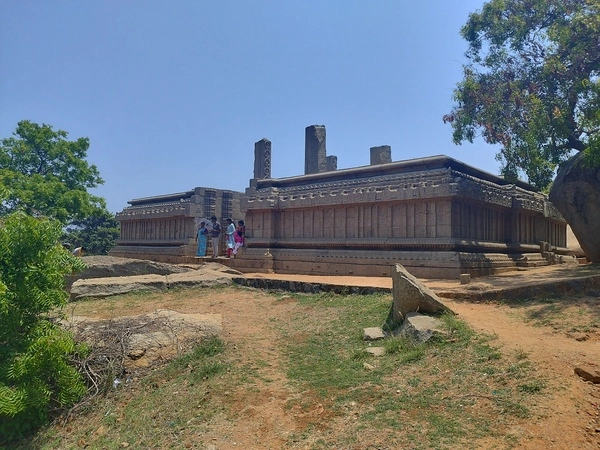
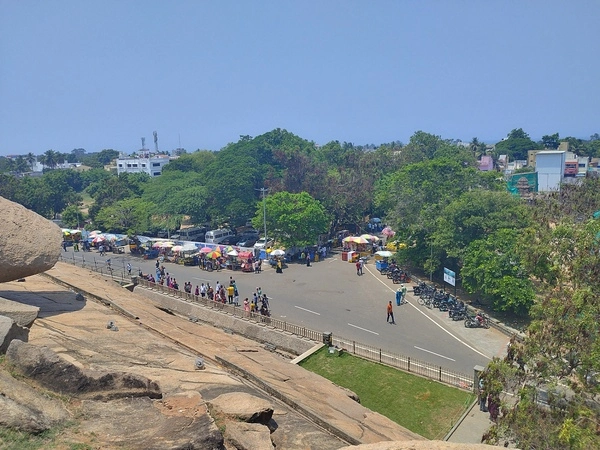
You may spot a few goats resting on the rocks under the shade of a tree.
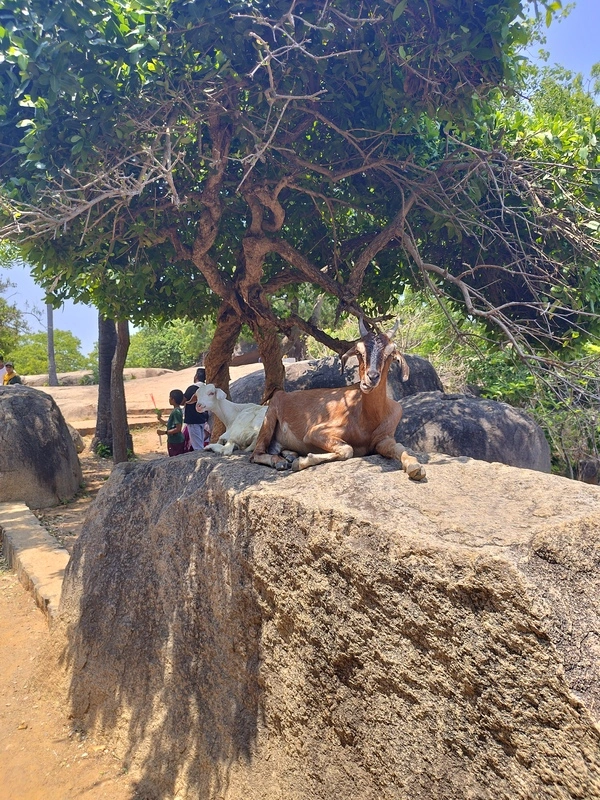
Ticket price
The ticket counter is located right in front of the Butter Ball. The ticket price is ₹40 for an Indian and ₹600 for a foreigner. It is free of cost for anyone below the age of 15 to enter the site. The tickets are marked during the entry.
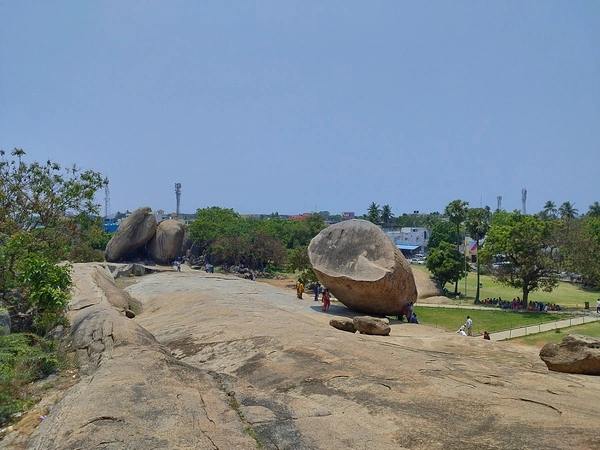
This ticket is valid for all the other monuments of Mahabalipuram, which means a person can enter any of the sites like the Shore temple, the lighthouse, and the Pancha Rathas with just one ticket. Visiting hours start at 6:00 A.M. and end at 6:00 P.M.
